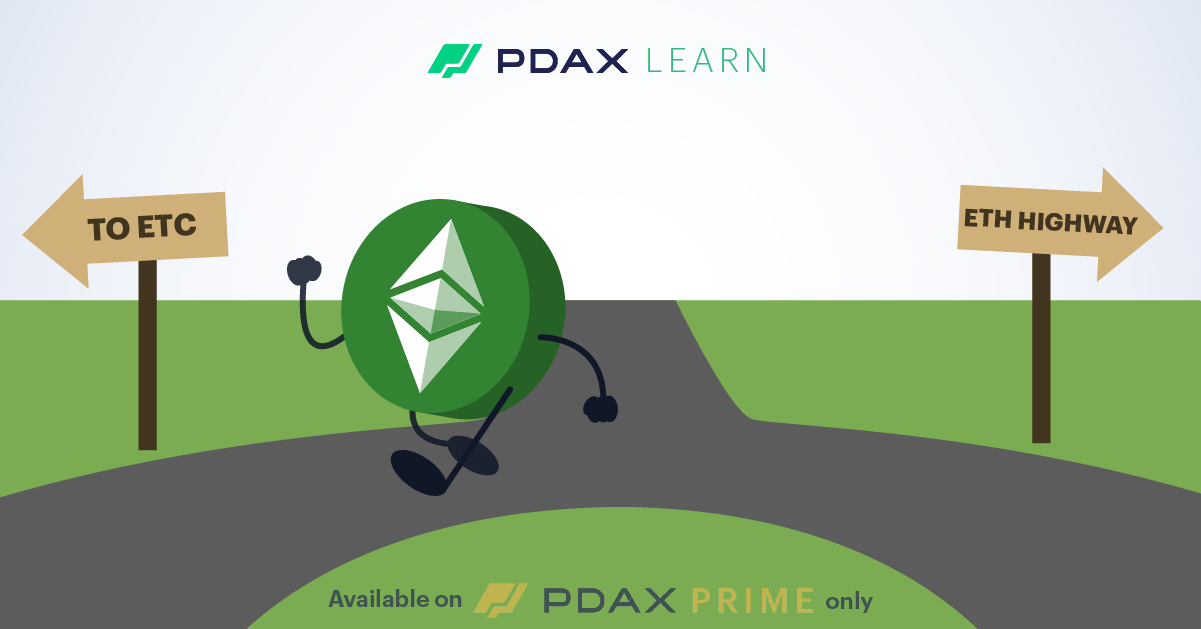A blockchain is an incredibly secure network due to its decentralized design and the transparency and immutability of its ledger. This means that blockchains like Ethereum (ETH) do not rely on a centralized server or database, but instead distribute the responsibility across their network nodes who work together through consensus algorithms in making sure that the data they store doesn’t get corrupted, altered or deleted.
However, even though blockchain security is very sophisticated, the decentralized autonomous organization (DAO) that oversaw the launching of the Ethereum network unknowingly had a loophole in its smart contract, which was exploited by hackers back in June 2016. As a result of the hacking, 3.6 million ETH (worth $55 million at that time) was stolen.
In response to the hack, Ethereum founder Vitalik Buterin decided that the entire Ethereum blockchain be “rolled back” so that every transaction that occurred during and after the hack becomes null and void.
In a blockchain, transactions are recorded in blocks, which are cryptographically linked with one another so that attempting to alter the data in one block will invalidate its link with the other blocks. This is what lends a blockchain its immutability.
However, many people saw Vitalik’s move as a violation of this immutability and the network’s decentralized design. As a result, they decided to continue the uninterrupted version of Ethereum through a network hard fork, which would then become Ethereum Classic (ETC).
What is ETC used for?
As Ethereum Classic is basically the same network as Ethereum, it also shares in the same smart contract capability that Ethereum has and uses the original Proof-of-Work consensus protocol.
ETC has the following utilities:
- ETC is used for paying gas fees for processing transactions and executing smart contracts for decentralized apps (dApps) built on the network.
- ETC is used to reward the miners who lend their computational resources for validating transactions.
- ETC can also be staked in various decentralized finance (DeFi) platforms for passive yield.
ETH vs ETC
Ethereum Classic and Ethereum are often compared with one another with ETC being the traditional representation of what Ethereum was like, while ETH, the evolved version of the blockchain. Recently, Ethereum underwent its most significant change, transitioning to a Proof-of-Stake protocol in what was called The Merge update.
ETH has gained a much wider acceptance among the worldwide blockchain community, now securely in place as the second largest network next only to Bitcoin (BTC) and with the largest dApp economy. However, this does not mean that Ethereum Classic does not have its own advantages.
For one, gas fees on ETC are significantly lower compared to Ethereum, as the latter has often been criticized for its network congestion due to its massive user network. Currently, gas fees on ETC average only about less than $0.01 compared to ETH which currently averages at $2, but which historically have gone much higher.
ETH also has an unlimited coin supply, while ETC instituted a hard cap update in 2017, limiting its supply to only around 210 million tokens.
Proponents of ETC also believe that the ETC network upholds decentralization better because it prioritizes upholding ledger immutability and community decisions over updates that may be seen as catering to central interests.
Tokenomics
ETC has a current market capitalization of $2.9 billion as of October 2022. It has a maximum supply of 210,700,000 ETC and a current circulating supply of 137 million ETC (65%).
When it first launched, 72 million ETC was pre-mined for its initial coin offering (ICO), with 83.5% distributed to crowdsale contributors, 8.3% for the Ethereum Foundation, and 8.3% for early contributors. The hard cap upgrade instituted over the ETC supply effectively makes ETC a deflationary token.
Ready to start with crypto?
Start your trading journey with PDAX.
DISCLAIMER: The statements in this article do not constitute financial advice. PDAX does not guarantee the technical and financial integrity of the digital asset and its ecosystem. Any and all trading involving the digital asset is subject to the user’s risk and discretion and must be done after adequate and in-depth research and analysis.
About PDAX
PDAX is a BSP-licensed exchange where you can trade Bitcoin, Ethereum, and other cryptocurrencies directly using PHP!
Featured Posts
You might also like
MON (Monad) is now on PDAX!
PDAX
December 04, 2025
PDAX Learn: USDC on Arbitrum is now on PDAX
PDAX
December 01, 2025
Pump.fun’s PUMP token is now on PDAX! 🎈
PDAX
November 26, 2025
Aerodrome Finance’s AERO token is now on PDAX!
PDAX
November 12, 2025
